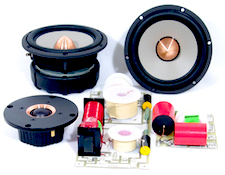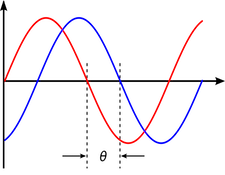It’s the time of year for saving money!
In the first six installments of this continuing series about the history of high performance sound reproduction and our audiophile hobby, I told you about how it all started with horn speakers and low-powered triode amplifiers in movie theaters, sports arenas, and concert halls and how both “audiophiles” and that fine fancy name for them came along in the 1940s when the first audiophiles brought home equipment from a movie-house, a radio station, or a recording studio and found that it sounded good, but that in order to make anything like decent bass, its speaker had to be far too big to fit in anything like a normal living room.
 Then, after describing that problem, I told you a little about some of the kinds of speakers developed to solve it, starting with the “corner horns” invented by Paul Klipsch, exploring various more-or-less successful other options, and ending (size-wise), with Edgar Villchur’s “acoustic suspension” “bookshelf” speakers that could produce bass as deep or deeper than most of even the biggest horns. From there, I went on to write about the coming of two-channel “stereophonic” sound (as opposed to the earlier “monophonic” [mono] single-channel system) that could allow a listener to tell not only what they were listening to, but (at least ideally) where it was, and in what size acoustical environment, even if it or the things around it were moving. This new system – which, once again, came home from the movies – brought with it (as seems always to be the case), its own special problems, most of which were based either on differing arrival times of the sound from the speakers’ drivers to the listening position or on maintaining the phase relationships of the reproduced sound.
Then, after describing that problem, I told you a little about some of the kinds of speakers developed to solve it, starting with the “corner horns” invented by Paul Klipsch, exploring various more-or-less successful other options, and ending (size-wise), with Edgar Villchur’s “acoustic suspension” “bookshelf” speakers that could produce bass as deep or deeper than most of even the biggest horns. From there, I went on to write about the coming of two-channel “stereophonic” sound (as opposed to the earlier “monophonic” [mono] single-channel system) that could allow a listener to tell not only what they were listening to, but (at least ideally) where it was, and in what size acoustical environment, even if it or the things around it were moving. This new system – which, once again, came home from the movies – brought with it (as seems always to be the case), its own special problems, most of which were based either on differing arrival times of the sound from the speakers’ drivers to the listening position or on maintaining the phase relationships of the reproduced sound.
For “mono” recordings, being able to locate the source of the recorded sound was neither important nor possible, so speaker designers of the mono era, having no reason not to, just placed their drivers anywhere on the face of the speaker that was convenient or that they thought looked good. For stereo, though, that practice made for differences in the distance (and therefore the travel time) from each of the speaker’s drivers to the listener’s ears and made for problems in creating a proper sonic “image”.
 Those problems were caused by the positioning of the speaker’s drivers, and could be, and finally were cured, to at least a substantial degree, by moving them. In recognition of stereo’s special needs, speaker designers developed new “time aligned” models that , based on anything from just lining-up all of the physical centers of the various drivers vertically to form a “line source”; to positioning a two-way speaker’s woofer and tweeter concentrically; to lining-up either the voice-coils or the acoustic centers (Yes, there is, or at least CAN be a difference, but that’s a different tale) of all of the drivers at the same front-to-back distance from the listener’s ears, managed to get virtually all of the sound from all of the drivers to arrive where it was supposed to be at essentially the same time – at least for listeners more or less directly in front of them.
Those problems were caused by the positioning of the speaker’s drivers, and could be, and finally were cured, to at least a substantial degree, by moving them. In recognition of stereo’s special needs, speaker designers developed new “time aligned” models that , based on anything from just lining-up all of the physical centers of the various drivers vertically to form a “line source”; to positioning a two-way speaker’s woofer and tweeter concentrically; to lining-up either the voice-coils or the acoustic centers (Yes, there is, or at least CAN be a difference, but that’s a different tale) of all of the drivers at the same front-to-back distance from the listener’s ears, managed to get virtually all of the sound from all of the drivers to arrive where it was supposed to be at essentially the same time – at least for listeners more or less directly in front of them.
Even after solving that problem, another one still remained to be dealt with: “phase shift”. What phase-shift is and how it affects the ability of a speaker system to present a convincing sonic image were explained in Parts 5 and 6 of this series. Also explained was the fact that, because most high performance speaker systems divide the frequency spectrum into two or more segments to be reproduced by specialized drivers (woofer, midrange, tweeter, etc.); because doing that requires a crossover network; and because all conventional passive crossover networks involve, as part of their basic nature, a substantial element of phase-shift, most loudspeakers – even the very most modern – unless their crossovers are specially corrected or they use just one single full-range driver (a planar electrostatic, or planar magnetic, for example), are still likely to “image” and “soundstage” less well than they could if they were “phase-perfect”.
 Actually, even single driver speakers can have phase-shift, too: When you look at the frequency response “curve” for any loudspeaker and see that it’s anything at all other than a perfectly flat straight line, you’re seeing proof that its output not only deviates from the ideal in amplitude at the frequency where the curve peaks or dips, but that it also deviates in phase – whether or not it has a crossover. That was first told to me by my friend Tony DiChiro — in my opinion, one of our industry’s sharpest designers – and it may be a basic reason why loudspeaker expert Floyd Toole believes that flat frequency response is so important to a successful loudspeaker design.
Actually, even single driver speakers can have phase-shift, too: When you look at the frequency response “curve” for any loudspeaker and see that it’s anything at all other than a perfectly flat straight line, you’re seeing proof that its output not only deviates from the ideal in amplitude at the frequency where the curve peaks or dips, but that it also deviates in phase – whether or not it has a crossover. That was first told to me by my friend Tony DiChiro — in my opinion, one of our industry’s sharpest designers – and it may be a basic reason why loudspeaker expert Floyd Toole believes that flat frequency response is so important to a successful loudspeaker design.
Even with that the case, there’s still hope: By using digital delays and appropriate related circuitry it’s possible to fashion a device that will, for each driver it feeds (including even the full-range single driver just mentioned) not only perform whatever dividing function may be desired (crossovers were, in the beginning, often called “dividing networks”) but also maintain or correct to, a zero phase-shift condition for the entire speaker system.
Yes that DOES imply frequency equalization, and it DOES mean that, using such a device, a phase-perfect, “flat” frequency response speaker system could be designed. The only possible problem is that the digital crossover/equalizer/phase correction device would either have to be built into an amplifier with a separate output channel for each driver (Meridian-style) or would, if separate, have to be installed in the audio system after the preamp and feed a separate power amplifier for each driver. Electronic crossovers, both digital and analog have been around for a good long time, feeding either bi- or triamped speakers, so this kind of approach is not as unusual as it may seem, even now.
Instead, though, of just phase-correcting and (possibly) equalizing the speakers, and perhaps needing to buy not only a digital crossover, but one or more new power amplifiers to do so, why not just correct the entire system and even the room that it plays in all at the same time?
Ever since the 1990s, “room equalizers”, for manual or even fully automatic operation, have been offered to audiophiles and professional buyers. I’ll write a little about them next time.
See you then!





